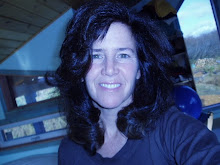

The Palm Islands Marine Reserve is a complex of 3 coral-formed terraces just over 5 kilometers off the coast of Tripoli. They are subtle; their low, flat profile keeps them barely visible from Tripoli’s harbor, but they are gems in the sea. Wael and I, along with Maria a Lebanese-American journalist, Liam, a Canadian photo-journalist, and Hugo, a fish tissue sampler from Italy, visited the Palm Islands last week to see what residual effects there were from the spill. This precious system, the only marine reserve in this heavily trafficked Mediterranean country. The islands are one of the few remaining breeding grounds for the endangered Loggerhead Turtle. Lebanon is primarily a migratory bird flyway rest stop, and home to resident shorebirds, but the reserve islands are home to the only nesting sea birds in Lebanon.
The first photo gives you an idea of the intricate motif of channels and plateaus that exist on the islands. What may appear as black algae on the surface is the tarry residue of oil form Jieh. The second shot allows a more up-close-and-personal view, for those of you who've not seen the remnants of spilled oil.
The Palm Islands were initially undamaged by the oil spill, but the lack of response to the disaster sent the oil well up the coast and into Syria, and the marine reserve stood naked in the middle of the slick’s path. In late August, the Mediterranean coughed black phlegm onto the exposed coralline shelves of the islands’ southern shores, seeping into the intricate rocky caverns of this unique piece of Earth. Swiss funds, French supervision (Le Floch Depollution), and hastily assembled cleanup crews composed of Tripoli's fisherman, spent weeks trying to scour the reserve of this affront, only to be slapped again. As an early winter storm pounded Lebanon's beaches in mid-November, it tossed oily muck from offshore high up the main island's beaches, re-polluting the beach, fouling more of its pristine white sand, and soiling the small plants that crowd above the tide line.
Many Lebanese have never visited this lovely treasure, located a mere two hours by car and boat from the heart of Beirut. Most Lebanese have no idea of the amazing diversity of their own country. Aside from its wealth of ancient historical artifacts, including the birthplace of the Bible (Byblos), Lebanon is a land of marshes, freshwater springs, sea caves, mountains, reefs, karst, marine life, the cedar trees used to construct cities now buried beneath the Earth, and much more. Such immense wealth… Fewer still are aware that their country sits on the shore of the most biologically diverse marine ecosystem on Earth, encompassing a mere 0.7% of the world’s oceans, yet providing a home to 7.5% of the world’s marine animals, and 18% of the world’s marine plants.
There is no mistaking the abuse that the 1989 Exxon Valdez spill imposed Alaska’s stunning shores; scratch beneath the surface and you’ll likely peer into a pool with the unmistakable odor of something cruelly out of place. But in many ways, Alaska has recovered, now wisened from our prior lack of knowledge about our home and preparedness for the inevitable. Lebanon, too, will see other disasters. But my hope is high that the sea will recover. Despite the tar on the rock reefs - which will likely remain for years after the cleanup crews disperse - we did see fish in the Palm Islands’ crystal clear intertidal pools. And the gentle waves of the Mediterranean lapped at the stunning white sand beach, and asked me to return as we pushed off the island's shore and back into the harbor’s heart.


No comments:
Post a Comment